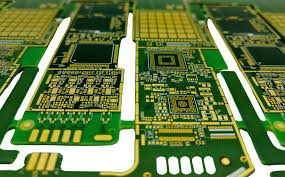Development in the Material Science: Flexibility, and Durability
The flexible PCB industry has also pushed strides in materials technology and has focused on improving flexibility and thermal stability. The invention of the liquid crystal polymer material is one of the trends. LCPs have exceeded expected thermal resistance and stability by maintaining performance at temperatures up to 280°C. The application of this new technology applies to the aerospace and automotive industry that will encounter such temperatures. For instance, when used, this new technology has provided at least 30% improvement in the heat dissipation capability with some designs achieving over 50% extra thermal control.
Innovations in 3D Printing: Prototypes Circuit Production
The fastest way of producing a prototype is using the technology of 3D printing. The entire procedure is designed to produce a 3D model from scratch and performed from just a few days to a week in contrast to the standard prototyping that will take a month or more to complete. In the latter months, the advanced process integrates the printing of functional circuits into one step with the placement of conductive inks in the 3D printer’s printer nozzles. The process also means that the production process has become more efficient and less polluting, saving up to 25% of the material.
Increased Device’s Functionality Demand: More-Layer Flex Circuits
With the design of the device becoming increasingly convoluted, the old single-and-double-layer designs of flexible PCBs are not sufficient for the modern environment. In the current age, it is commonly planned for devices to have multi-layer flexible PCBs, and in some cases, the design requires up to 30 layers. The multi-layer enables the device to have multiplicity and at the same time efficiency in electrical performance at the required space. As in the case of high-resolution MRI machines, the comfort and quality of imaging processes are influenced by the capacity of the device to efficiently carry multiple sensors and circuits in one close proximity.

Enhanced connectivity – improvements in interconnect density
Given the growing number of IoT and other smart devices, connectivity is a crucial element of practically any electronic design. Recent advances in flexible PCB technologies have demonstrated a focus on increased interconnect density, that is, a higher number of connections per unit area. This trend has specific value in applications where the use of complex, minuscule sensors is organic. Modern technologies allow us to implement interconnect densities that are 40% higher than what was achievable five years ago. It enables creating more complex and compartment sensor arrays in devices from environmental monitoring systems to high-end wearables.
Environmental sustainability – driving greener solutions
The development of electronic components often suffers from the problem of significant negative environmental impacts. The flexible PCB sector is making strides to reduce its overall ecological footprint. In recent years, firms have been working on developing more sustainable production methods. Specifically, they achieve this by using water-soluble materials as temporary supports for PCB structures. Because these materials dissolve in water, no powerful toxic chemicals are required to remove them. Furthermore, this approach decreases the consumption of water in production by up to 50%. The next major breakthroughs
Flexible PCB technology does not stand still, with new innovations popping up at an increasing pace. Both high-tech industries and regulators driving improvements for sustainability put constant pressure on developers to learn this technology’s third degree. The resulting innovations expand the uses of this technology across numerous applications and set new standards for what can be achieved through the use of these circuitries. The rapid pace of advancement means that in future, we are likely to see even more extraordinary achievements that will redefine the possibilities of flexible circuits once again.
